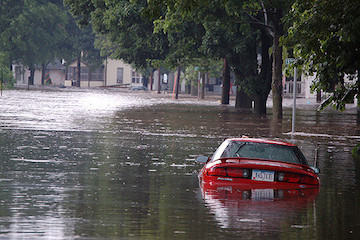421216-great migration.jpg

Rising sea levels could displace millions of Americans living near coastlines. Credit: USGS
During the 1930s, millions of Americans in the Great Plains saw their farms literally blow away. A deadly drought, combined with poor farming techniques, created the Dust Bowl. Millions of tons of topsoil blew away in black, choking clouds. And that led to a massive migration, as millions of Americans moved west in hopes of a better life.
A new climate-related migration might take place later in this century. Millions of Americans might be forced to flee the coastline because of rising sea levels — the result of our planet’s warming climate.
In 2010, roughly one in three Americans lived in counties that touch the Atlantic, Pacific, or Gulf coasts or related bays and estuaries. And that population is expected to increase by millions more in the coming decades.
But sea level is on the rise. Depending on the climate models, it’s forecast to go up anywhere from about a foot to perhaps six or seven feet by the end of the century.
And a recent study says that rise could displace millions of Americans who live at elevations of no more than a few feet above the high-tide level. Not only would the rising waters inundate much of the coastline, but they’d bring much higher surges during hurricanes and other big storms. That would make much of today’s coastline uninhabitable.
The study says that a sea-level rise of three feet could force about four million people to move away from the coast. And a rise of six feet would triple that number — creating an American migration far greater than the Dust Bowl.

